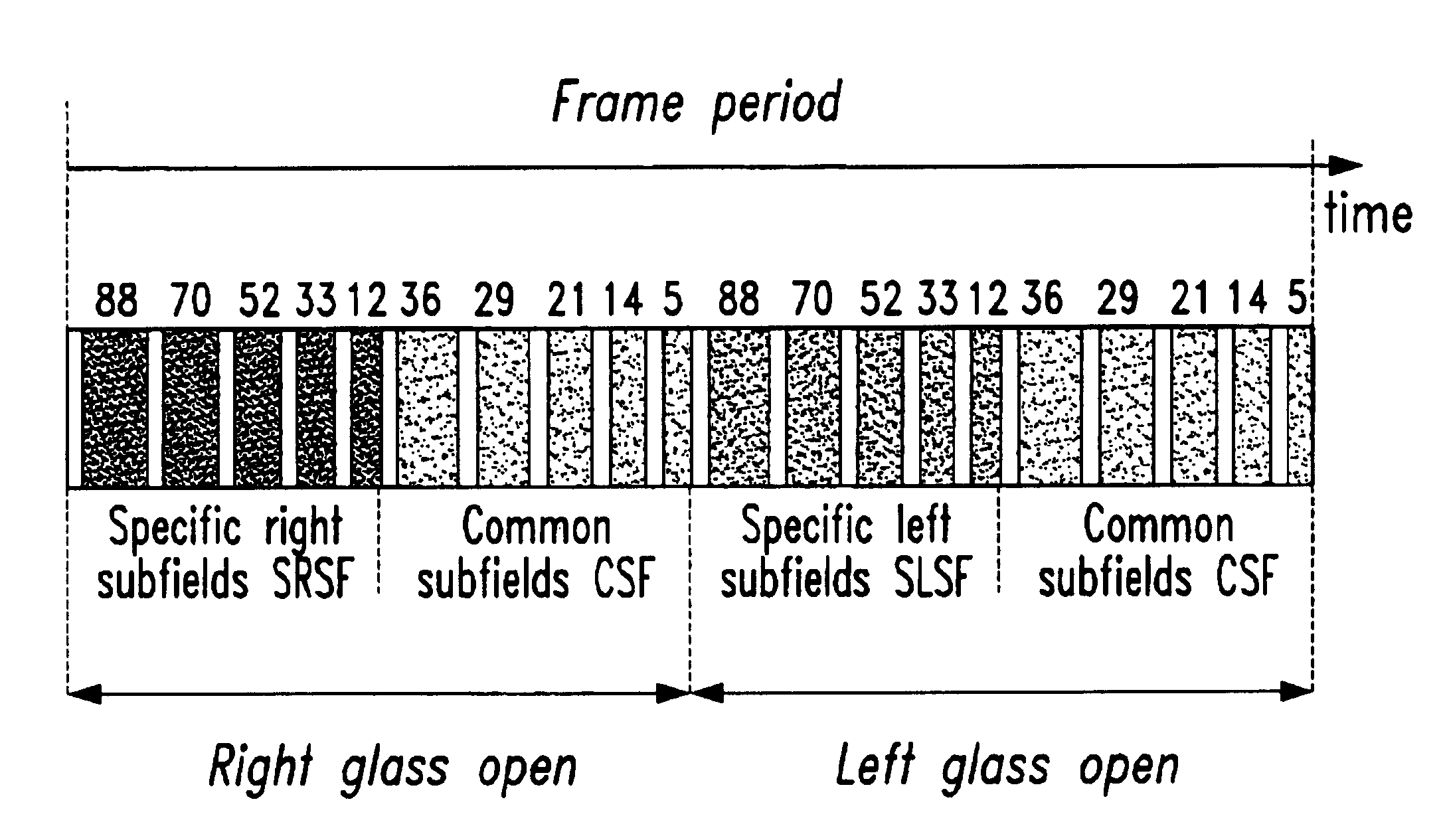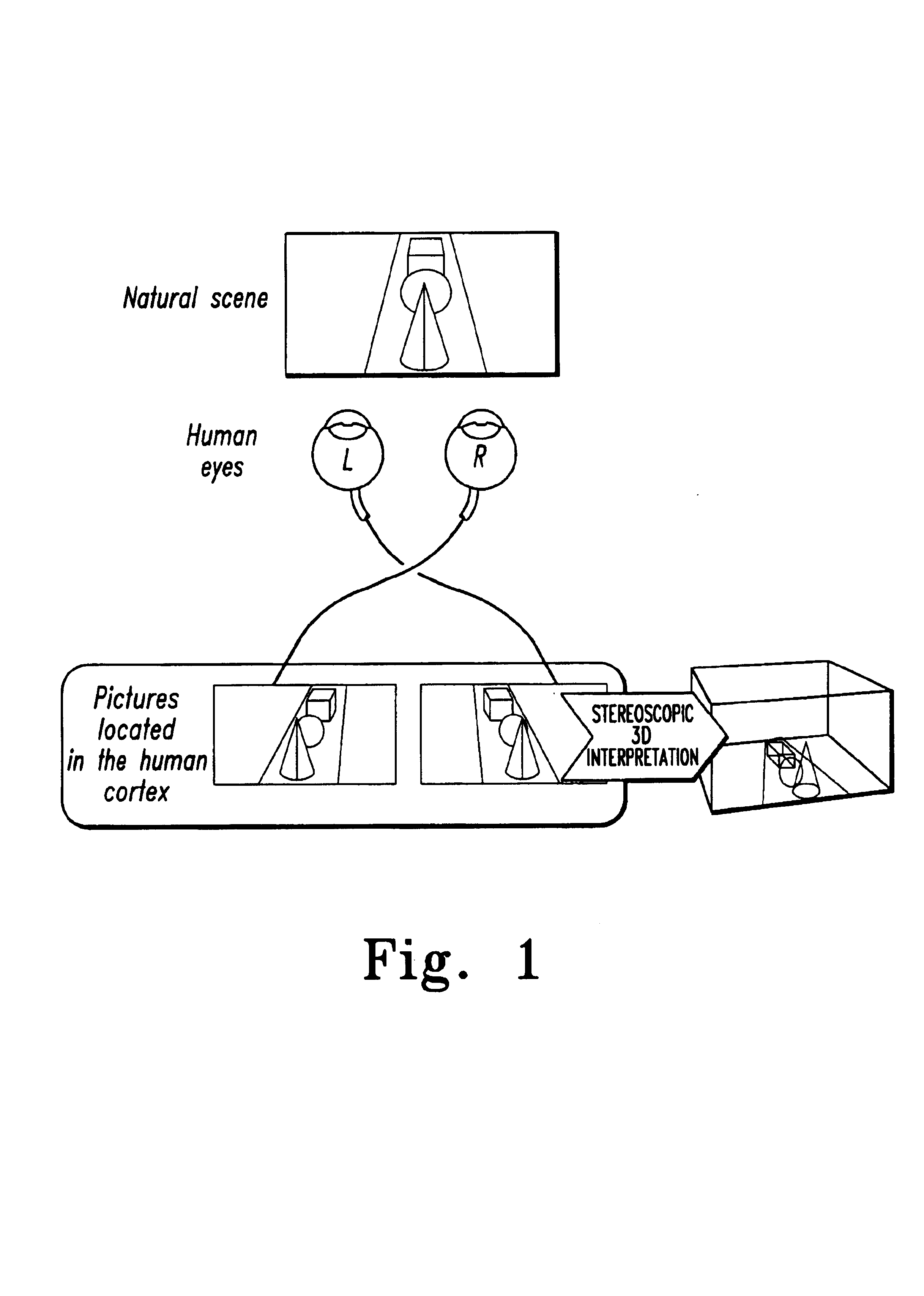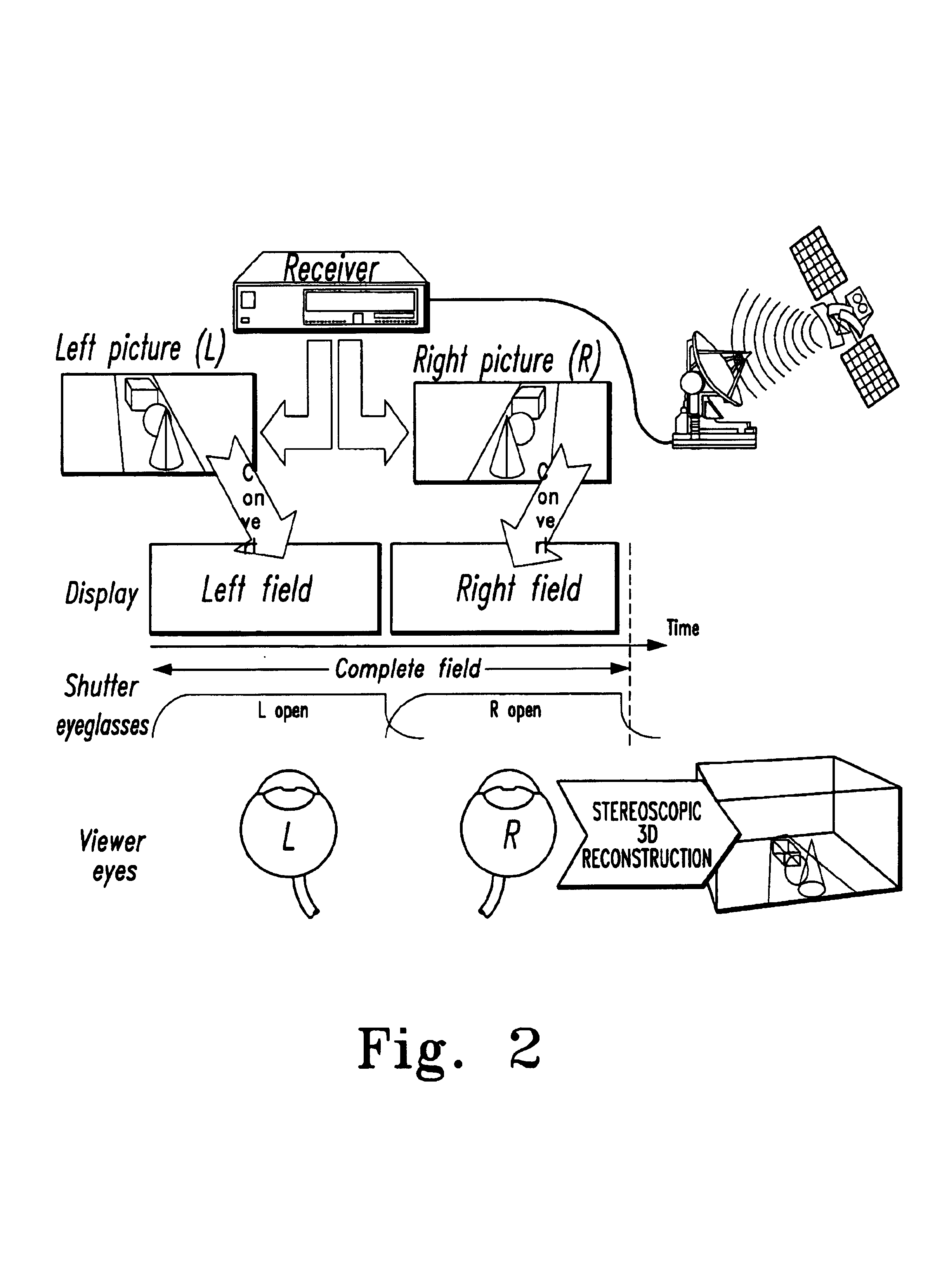Stereoscopic picture separation for phosphor lag reduction in PDP
a technology of phosphor lag reduction and stereoscopic picture separation, which is applied in the field of stereoscopic display methods and devices, can solve the problems of reducing a lot of image brightness, time parallax between the two, and the possibility of ghosting between, and achieves the effect of less luminan
- Summary
- Abstract
- Description
- Claims
- Application Information
AI Technical Summary
Benefits of technology
Problems solved by technology
Method used
Image
Examples
Embodiment Construction
[0036]Preferred embodiments of the present invention will be explained along with FIGS. 6 to 10.
[0037]A first embodiment of the invention is based on a specific-common sub-field encoding with stereoscopic pictures separation as mentioned above. The principle of the specific-common sub-field encoding is described in the previous application EP 01103185.3 of the applicant. For the purpose of the disclosure of this application it is therefore expressively referred also to the former application. The basic idea behind this concept is to apply three images instead of two: instead of the right and left images, three images, namely a specific-right one, a specific-left one and a common one are considered.
[0038]This concept is based on the fact that the two original pictures are two views from the same scene with lots of similarities. A pair of Right(R) and Left(L) images will be converted in three pictures: Specific Right(R′), Specific Left(L′) and (C′) which is the common one. This conver...
PUM
 Login to View More
Login to View More Abstract
Description
Claims
Application Information
 Login to View More
Login to View More - R&D
- Intellectual Property
- Life Sciences
- Materials
- Tech Scout
- Unparalleled Data Quality
- Higher Quality Content
- 60% Fewer Hallucinations
Browse by: Latest US Patents, China's latest patents, Technical Efficacy Thesaurus, Application Domain, Technology Topic, Popular Technical Reports.
© 2025 PatSnap. All rights reserved.Legal|Privacy policy|Modern Slavery Act Transparency Statement|Sitemap|About US| Contact US: help@patsnap.com



